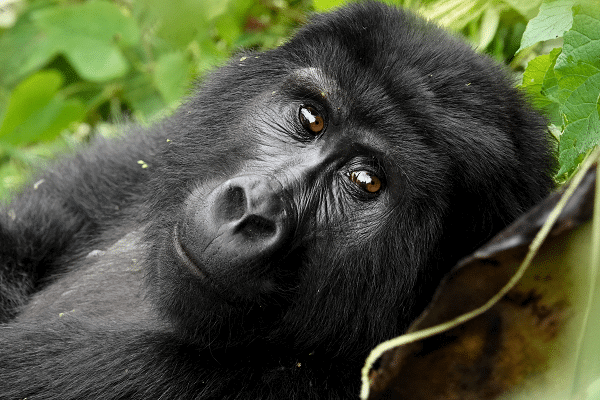Winston Churchill famously wrote of Uganda, “For magnificence, for variety of form and colour, for profusion of brilliant life – bird, insect, reptile, beast – for vast scale – Uganda is truly ‘the Pearl of Africa’”.
Though the slogan was coined before Churchill, his words still ring true today.
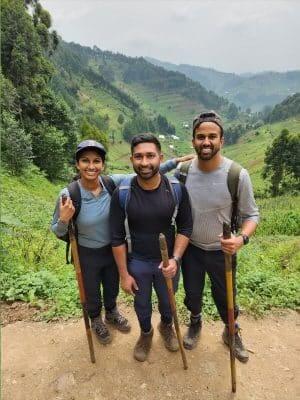 I arrive in Entebbe, Uganda’s second-largest city, in the company of two friends. We’ve devised a packed 5-day itinerary with a local tour company, and there are countless highlights before us: walking alongside white rhinos at Ziwa Rhino Sanctuary; cruising along the Victoria Nile where hippos, elephants and crocodiles abound; taking in the most powerful waterfall in the world at Murchison Falls National Park; and canoeing on Lake Bunyoni, one of the deepest lakes in Africa.
I arrive in Entebbe, Uganda’s second-largest city, in the company of two friends. We’ve devised a packed 5-day itinerary with a local tour company, and there are countless highlights before us: walking alongside white rhinos at Ziwa Rhino Sanctuary; cruising along the Victoria Nile where hippos, elephants and crocodiles abound; taking in the most powerful waterfall in the world at Murchison Falls National Park; and canoeing on Lake Bunyoni, one of the deepest lakes in Africa.
But no trip to Uganda is complete without a visit to primate country, alongside the fraught DRC border in the south-west; it may be a small corner of Uganda, but it draws in adventurers from all corners of the world.
Kibale National Park
Kibale’s streets are lined with scores of pesky baboons, but those aren’t the primates we’re here to see: it’s humanity’s closest cousin, the chimpanzee – 1,500 of whom swing throughout Kibale’s tropical clime.
After a briefing, our guide takes us through the flat but lush forest floor, searching for clues – pawprints, discarded fruit, and above all, the unmistakable screech of a chimp. He points out a giant, flattened tree along the way; the handiwork of one of the forest’s resident elephants.
45 minutes pass before we hear the tell-all screech; we look up to see a community of chimpanzees perched some 30 metres above us, nearly impossible to discern with the naked eye. But soon, two chimps start rapidly descending from the treetops, and they land right next to us.
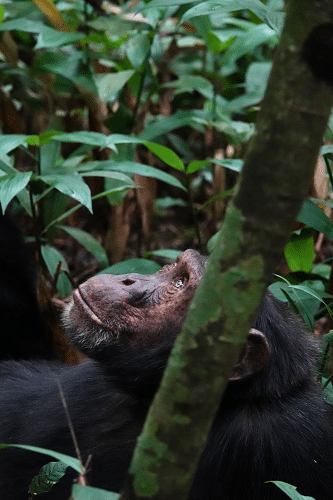 Gorilla trekking in Uganda
Gorilla trekking in Uganda
We follow them to a small clearing, where they groom each other patiently, seemingly oblivious to the small crowd of humans around them. We then track a solitary chimp, who eventually seats himself on a log, arms folded across his lap, deep in thought. Their faces are remarkably expressive, and when our eyes meet, the degree of connection is unrivalled.
By the time we leave, it’s abundantly clear to us why chimpanzees are 98.8% human.
Bwindi Impenetrable Forest
Bwindi houses hundreds of species of birds, mammals and over 1,000 types of flowering plant, but it’s best known as the home of over half of the world’s mountain gorillas.
There are around 50 gorilla families scattered across Bwindi. On arrival, we’re split into groups based on the guides’ assessment of our fitness – with less able travellers being assigned to gorilla families closer to the outskirts of the forest.
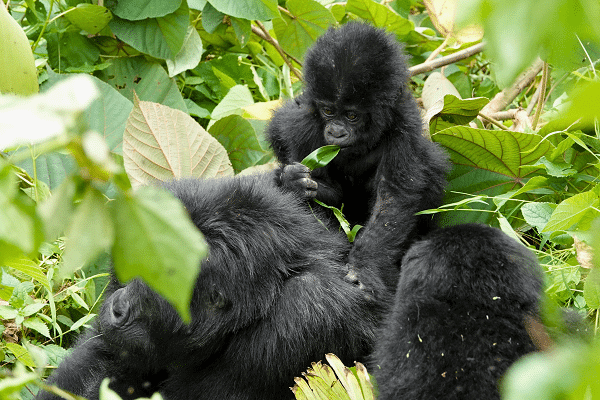 Gorilla trekking in Uganda
Gorilla trekking in Uganda
After a meandering, hour-long walk up into the mountains, we enter the forest.
The reason the forest is “impenetrable” becomes immediately apparent; the terrain is dense, slippery and steep. The vegetation before us is cut aside with machetes, and as we venture deeper, the safest way to proceed is to slide downhill on our backsides. It’s slow going, but the sense of raw adventure is unmistakable.
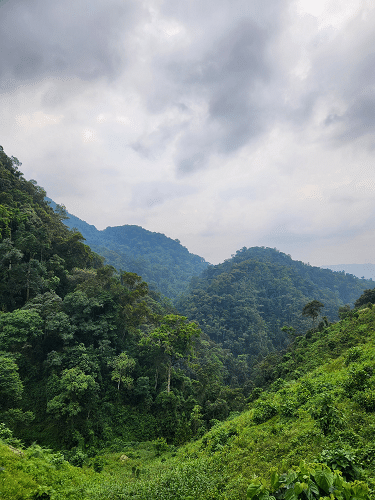
After two hours of sweating, slipping, and occasional swearing, our trackers stop to tell us, in hushed tones: the gorillas are close. At this point, we put on our face masks, to protect both the gorillas and us from communicable diseases.
Minutes later, a first glimpse of our quarry: a silverback gorilla sleepily playing with his infants, 10 metres away from us, on a narrow ridge. It’s a surreal setting; all that can be heard is the quintessential jungle symphony of cicadas, birds, frogs and flies.
Without warning, the silverback stirs. He rises slowly, and lumbers right past me, a hulking, gentle giant, planting himself to graze just five metres away from me. His family soon follows, and they play together down a small gully, as our group watches on from above, transfixed.
All too quickly, our allotted time with the gorillas is over; we’re guided out of the area with a circuitous hike back down into the village, where we bask in the exhilaration of the wildest of encounters.
Travel Notebook
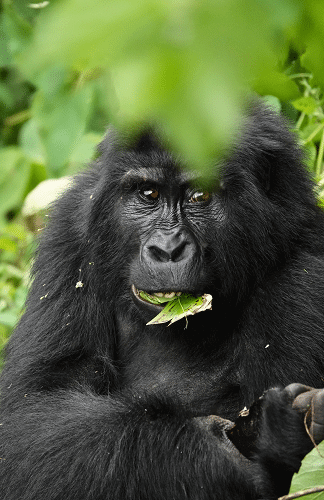 How to get there: Fly direct to Entebbe via Doha, which is a direct flight from most Australian cities. From there, it’s a 9-hour drive to Bwindi Impenetrable Forest, but there’s plenty to see along the way. It’s best to go through one of the many reliable and responsive Ugandan tour operators.
How to get there: Fly direct to Entebbe via Doha, which is a direct flight from most Australian cities. From there, it’s a 9-hour drive to Bwindi Impenetrable Forest, but there’s plenty to see along the way. It’s best to go through one of the many reliable and responsive Ugandan tour operators.
What to do: Other than Bwindi and Kibale, be sure to visit Ziwa Rhino Sanctuary, Murchison Falls National Park and Lake Bunyoni. Also consider Jinja – the adventure capital of East Africa.
When to go: It’s best to visit during the dry seasons – June to September, or December to January.
The dollars and cents: Permits for Gorilla trekking in Uganda costs approximately $1,200, but that’s still much cheaper than in Rwanda. Factor in an additional $2,000 to cover the other highlights – or self-drive to do it cheaper. It’s money well spent: thanks to reinvestment in conservation, mountain gorillas have been brought back from the brink of extinction to number over 1,000 today.
Read More: Picture-perfect Patagonia



